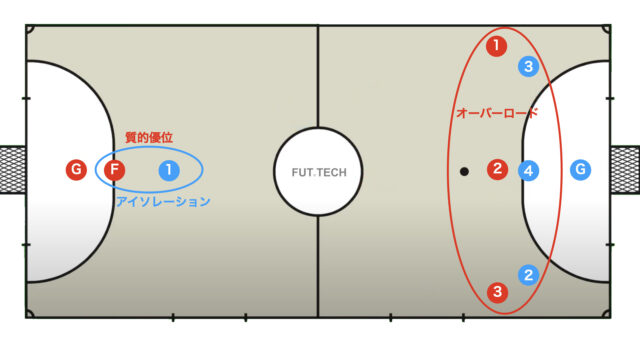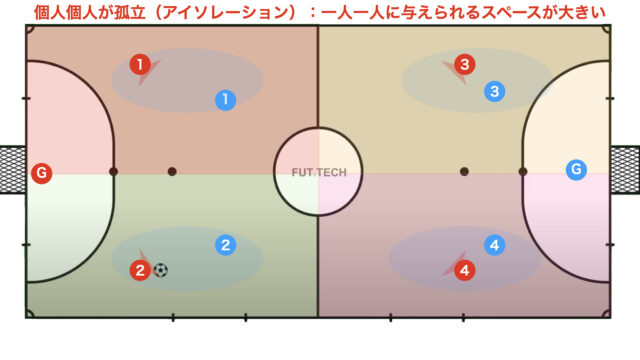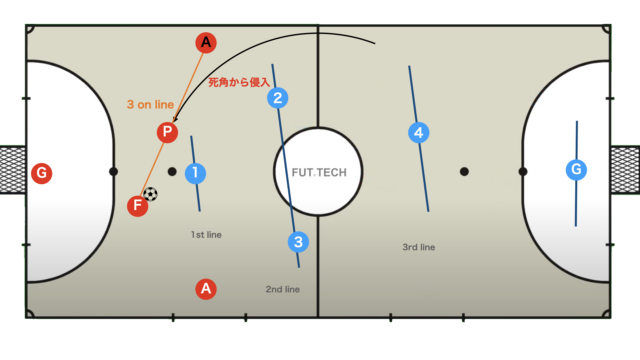Positional attack. It is a very profound aspect of futsal and sometimes referred to as a quagmire due to its complexity.
Conversely, it can also be considered a reflection of the essence of futsal.
This article discusses important concepts in considering positional attacks, covering orthodox formations such as 3-1, as well as more niche formations like 4-0, 2-1-1, and 1-3.
Formation Theory: Who to place where?
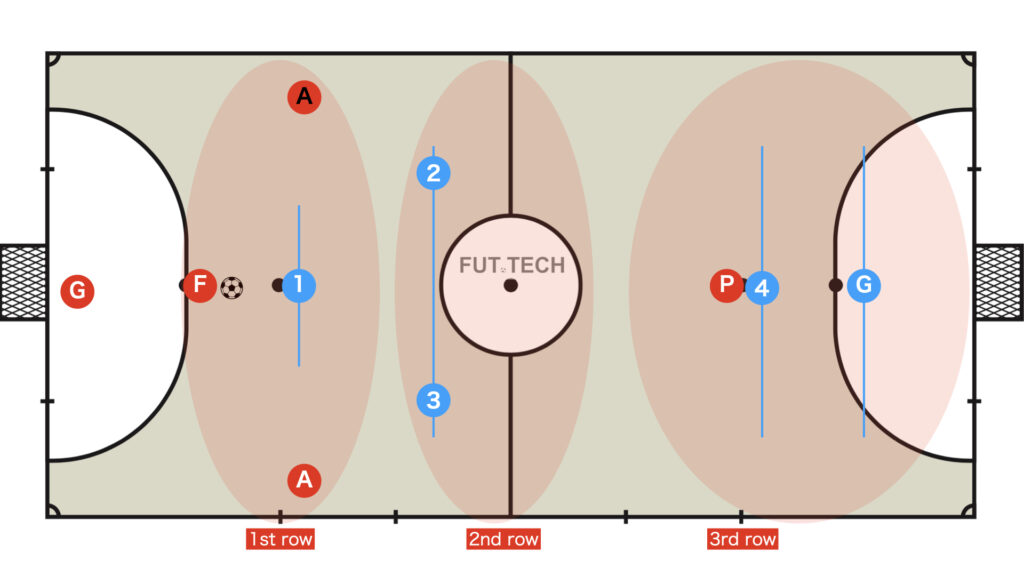
Excluding the goalkeeper, consider the court divided into three zones from the last player to the deep areas of the opponent’s field. The distribution of players in these zones determines the formation, with numerous patterns possible.
By distributing the four field players (FP) across the three vertical zones, ten potential configurations arise (without considering vertical divisions). Among these, the following five well-known configurations are commonly discussed in competitive futsal.
- Quatro zero (4-0-0, 3-1-0, 2-2-0, 1-3-0)
- 3-1 (3-0-1)
- 2-1-1
- 2-2 (2-0-2)
- 1-3 (1-0-3)
The 1-1-2 (inverted Y) and 1-2-1 (diamond) formations are quite rare in top-tier categories, so they are omitted here.
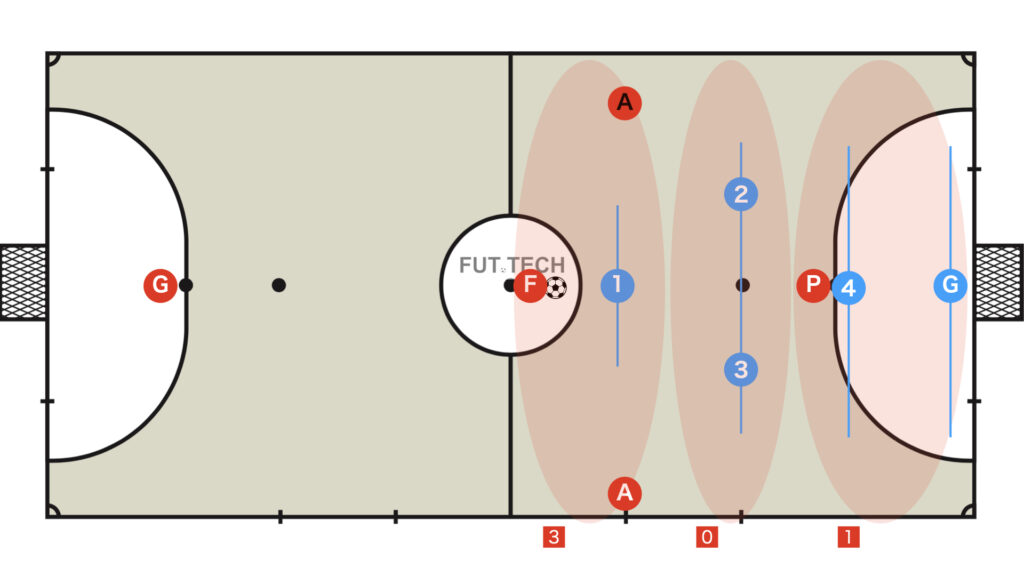
Similar reasoning applies to attacking the opponent’s field, dividing it into three zones as shown above.
It’s crucial not to focus solely on positioning but also to consider who to place where.
- Place players on the opposite side of their dominant foot to widen their field of vision
- Position players capable of shielding the ball upfront – Pivot
- Place players who can win 1vs1 and are fast on the sides – Ala
- Position tactically aware players with sufficient skill to give directions from the back – Fixo
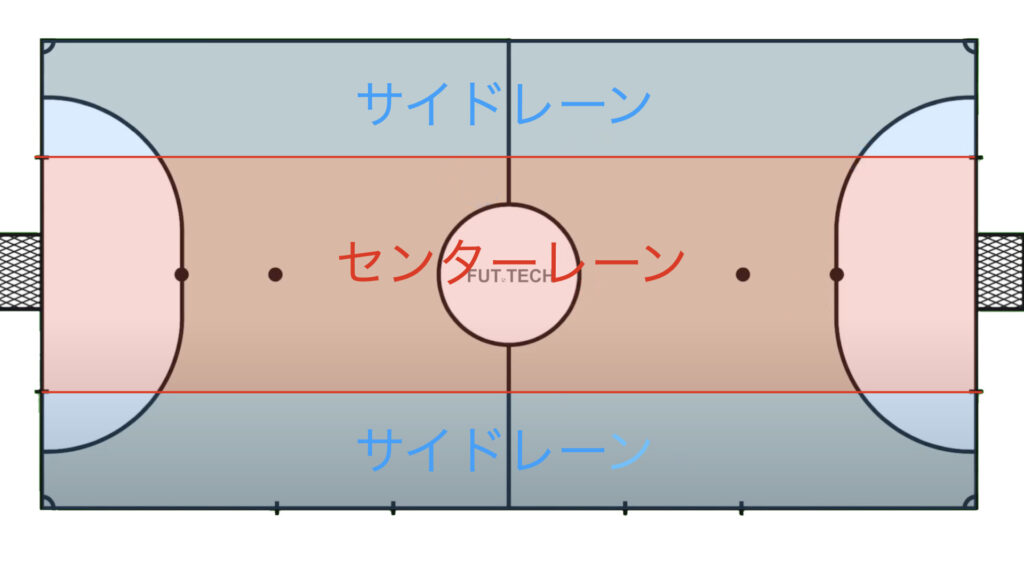
Though not detailed in this article, it’s necessary to also consider vertical divisions, not just horizontal ones.
Even with the same 2-1-1 formation, considering vertical divisions can result in more than four patterns.
Quatro Zero (4-0)
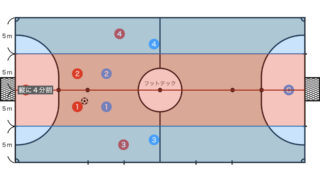
Quatro, meaning four in Portuguese, involves the four players in the back two rows moving the ball with minimal touches to exploit the space behind.
Without a pivot, maintaining a forward pass line continuously is challenging, but the space created by the absence of a pivot is easier to exploit.
4-0-0
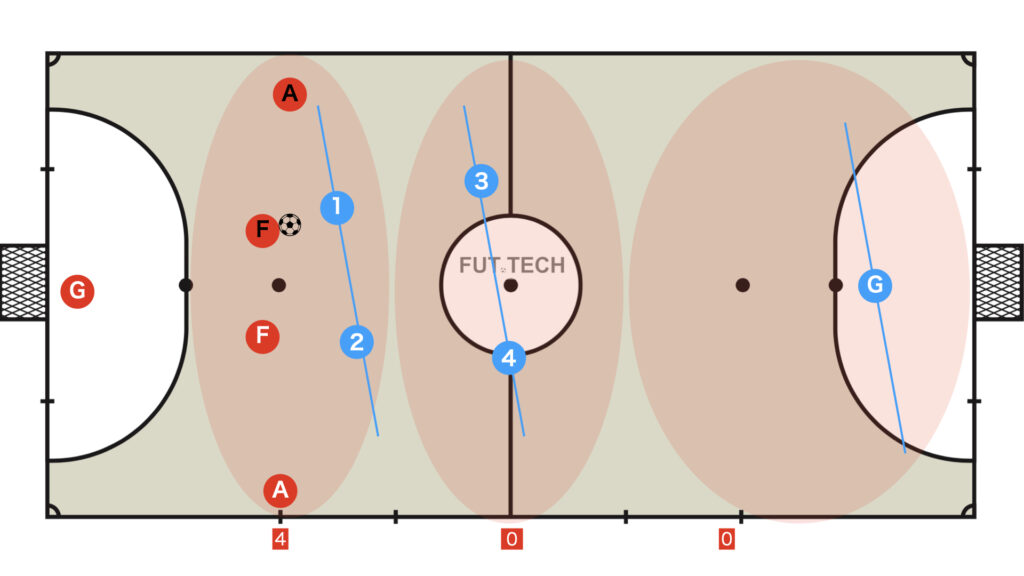
A formation forming a horizontal 4 on line.
3-1-0
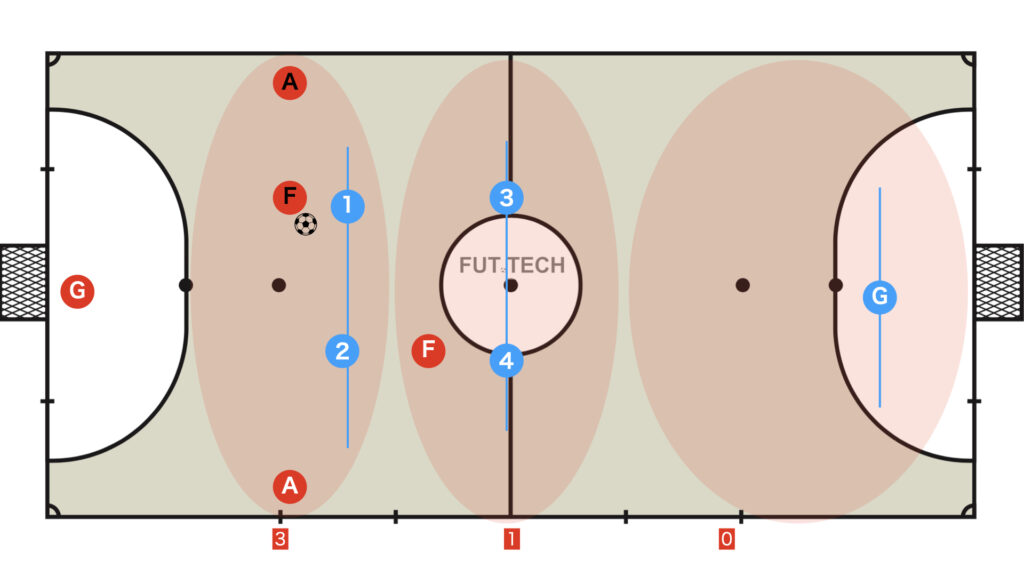
A horizontal 3 on line +1 formation.
The key is to have both sides take high positions after passing the ball in between the lines, with the ball holder able to pass behind using a pisada.
2-2-0
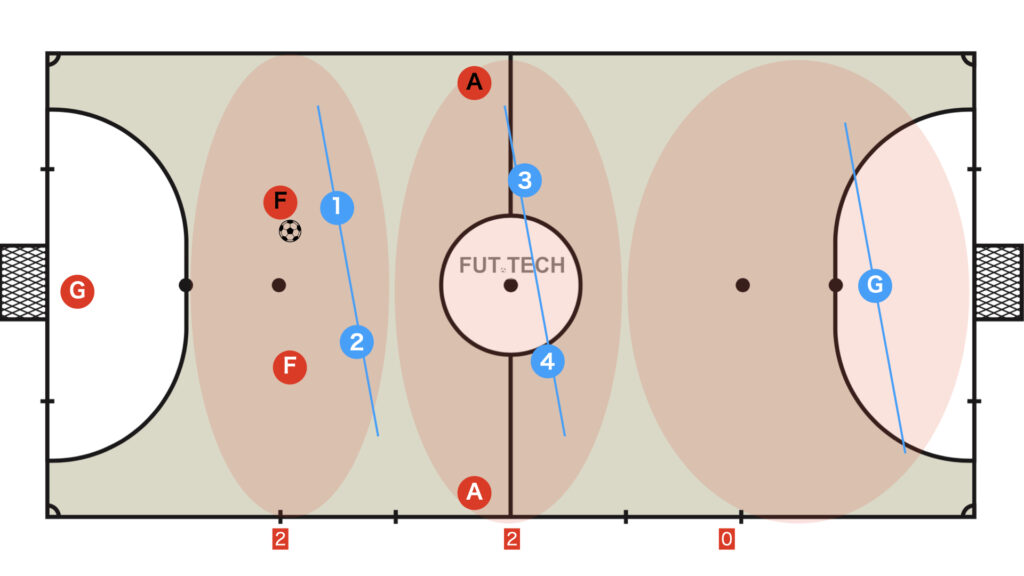
The most commonly seen bowl-shaped Quatro formation.
It has the advantage of easily maintaining stable pass lines.
1-3-0
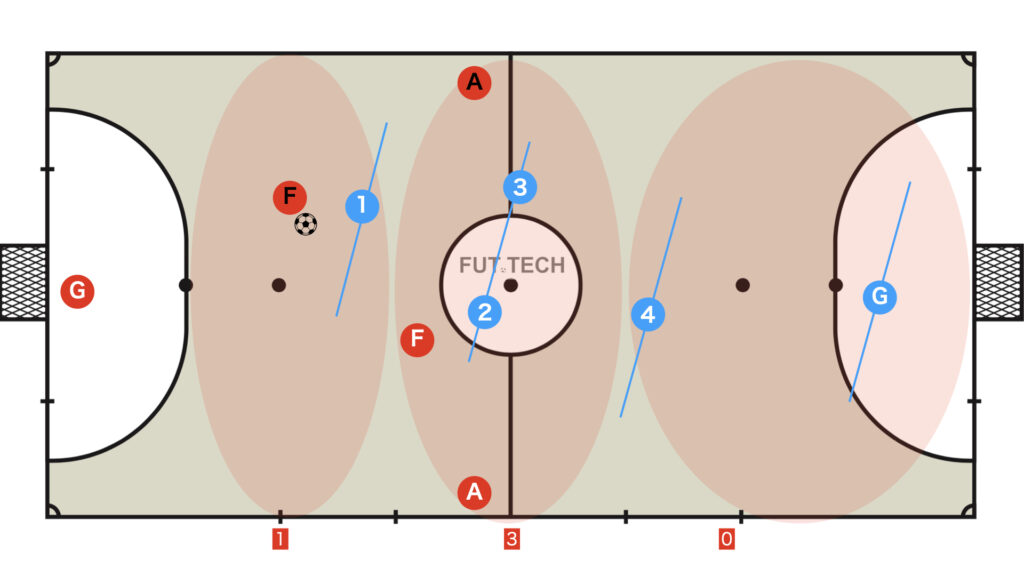
A formation known as the axis-present Quatro.
The single Fixo at the back remains fixed while the front three rotate.
It allows for continuous creation of diagonal 3 on line +1 and a triangle +1 formations.
3-1 (3-0-1)
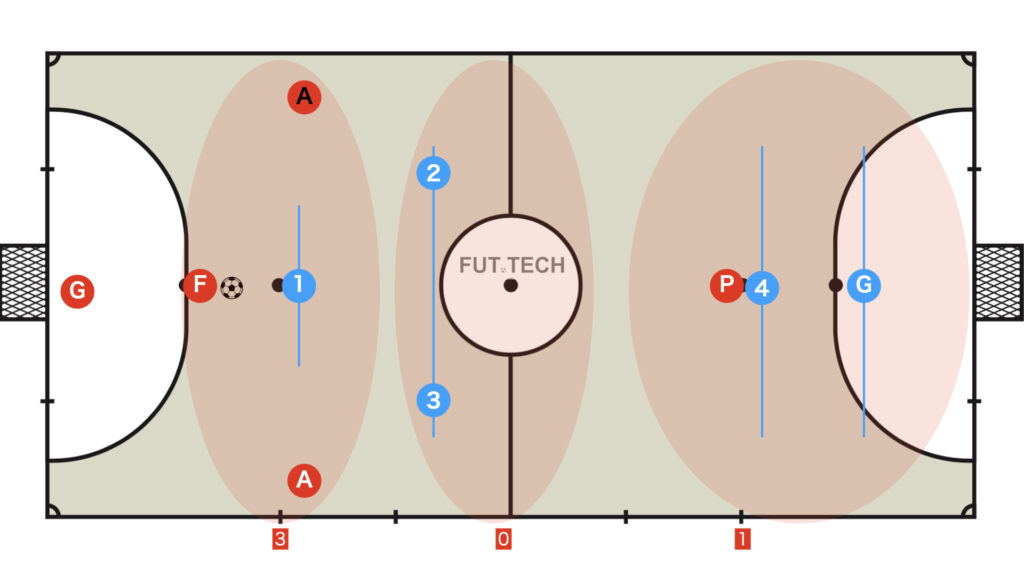
The most orthodox formation with a pivot upfront.
It is the most widely used due to its effectiveness in utilizing the long futsal court.

2-1-1
A formation hinging on the key player in the middle layer, which can transition to 2-2 or drop back to 3-0 (3-0-1).
L-shaped
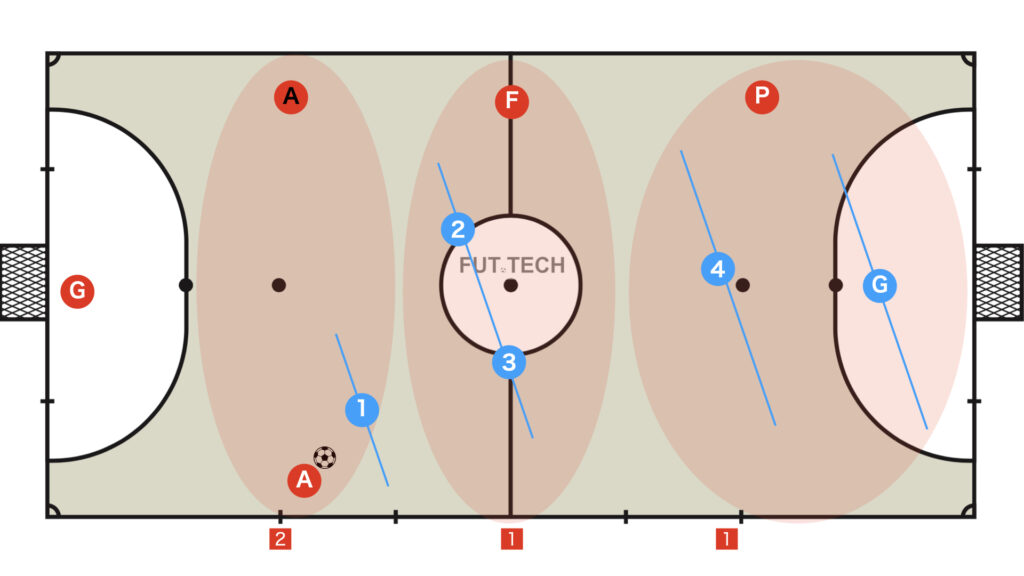
A vertical 3 on line +1 (Ala) formation.
Used to isolate one Ala, leveraging qualitative superiority for breakthroughs.
Also, the second line can drop back to form a horizontal 3 on line +1 (Pivot) formation.
Y-shaped
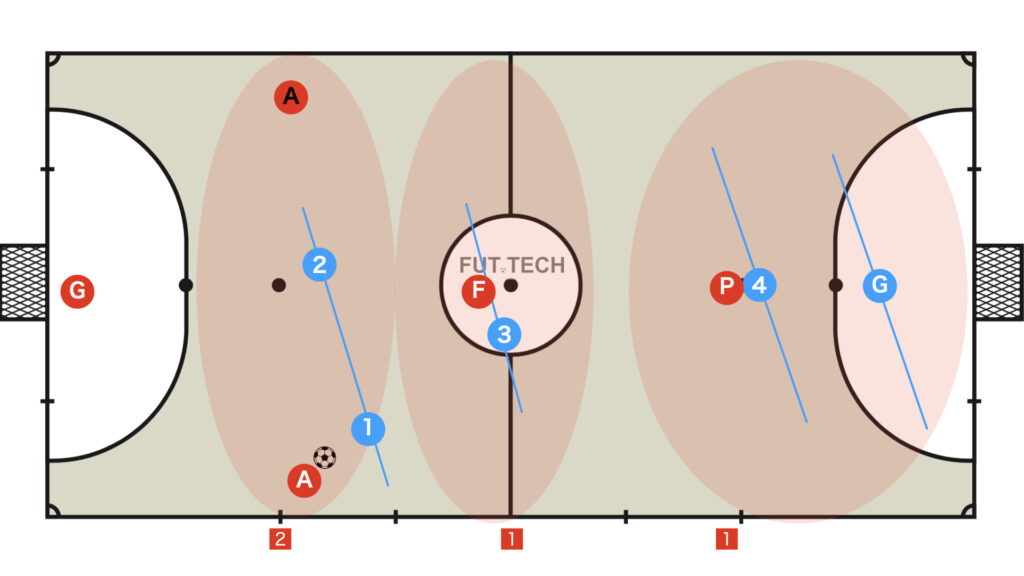
Targets utilizing the space between lines with the second player positioned in the line gaps.
λ-shaped

2-2 (Box formation with two pivots)
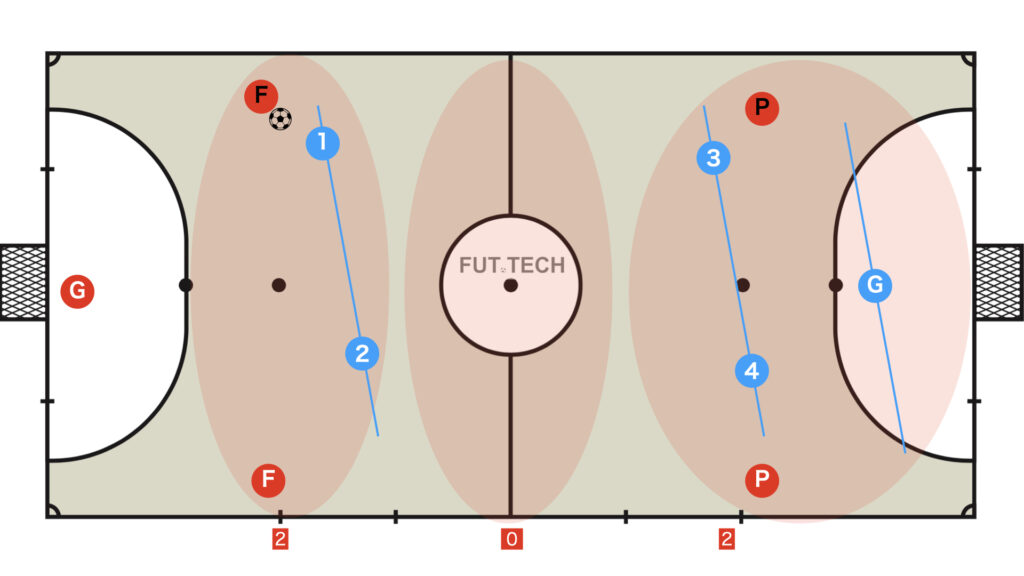
Placing two pivots upfront allows for constant vertical and diagonal pass lines but can depend heavily on individual skill due to increased distance between players.
Recently adopted by teams like Nagoya Oceans, it’s a suitable tactic for teams with high individual skills, reminiscent of athletic soccer clubs.
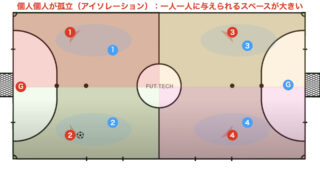
1-3 (Overload with three pivots and isolated fixo)
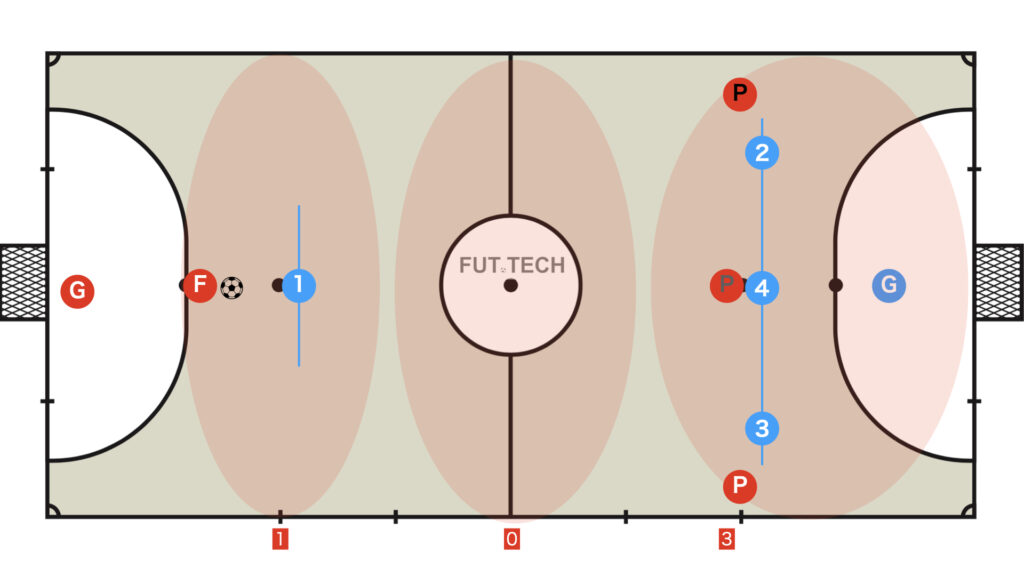
A formation concentrating three pivots upfront (overload) while isolating the fixo.
Effective when there’s a skilled fixo, aiming to utilize the vast space between the fixo and pivots.
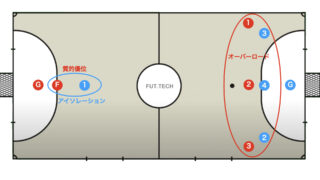
Rotation
Having players fixed in the same positions won’t work well as the defense can easily press and disrupt ball circulation.
Therefore, it’s crucial for players to move fluidly and rotate to confuse the opposing defense.
A common pitfall for futsal beginners is making rotations, like an eight, an end in itself. However, no matter how beautifully one rotates and retains the ball, it won’t lead to victory. The focus should be on disrupting the opponent’s defensive organization to score, with rotation as a means to an end.
Hedondo (Circulation)
Rotation where a certain number of players (2 to 5) move in the same direction (clockwise or counterclockwise) is referred to as circulation (Hedondo).
Four players
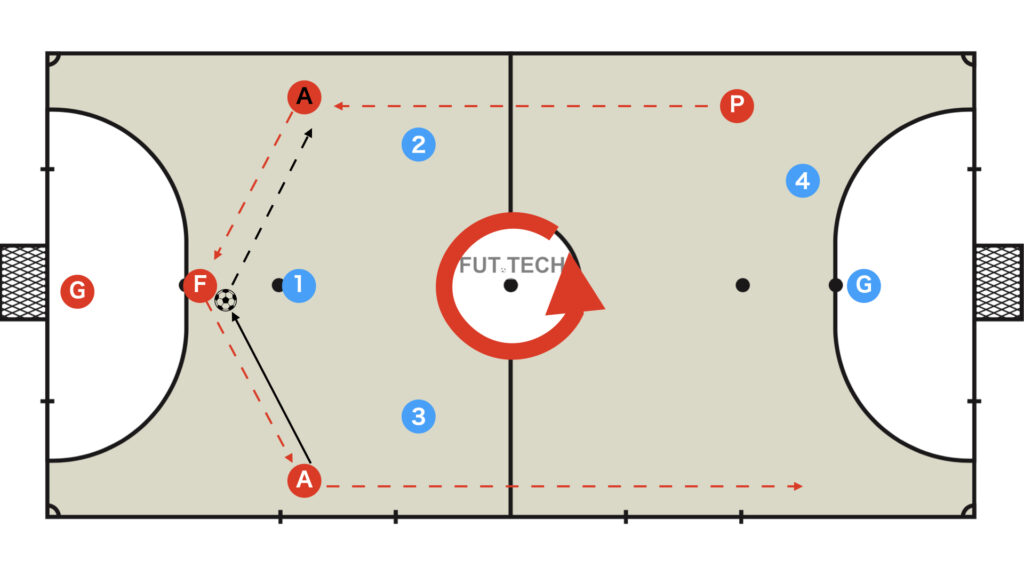
Three players
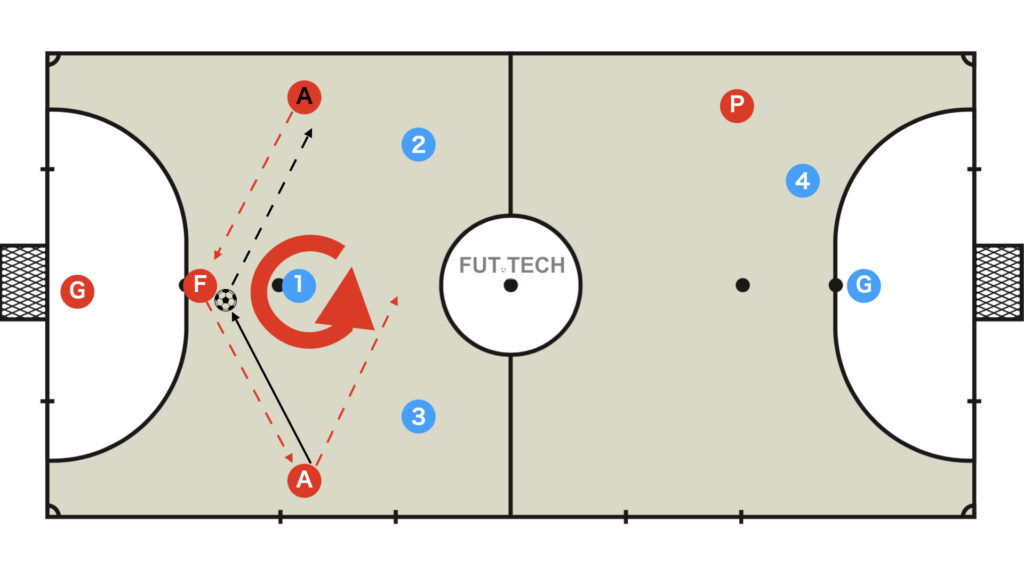
Eight: Figure-Eight Rotation
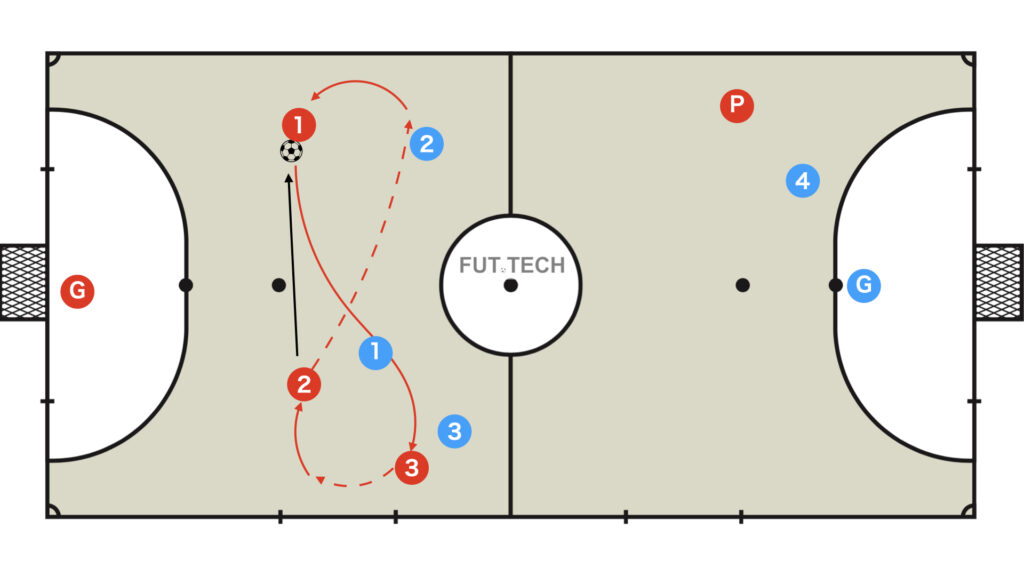
The rotation where the three back players form a figure-eight is widely known as “Eight” in a 3-1 formation.
Formation Change
It’s crucial to adaptively change formations according to the situation to confuse the opposing defense.
Moving Out
From 3-0-1 to 2-1-1
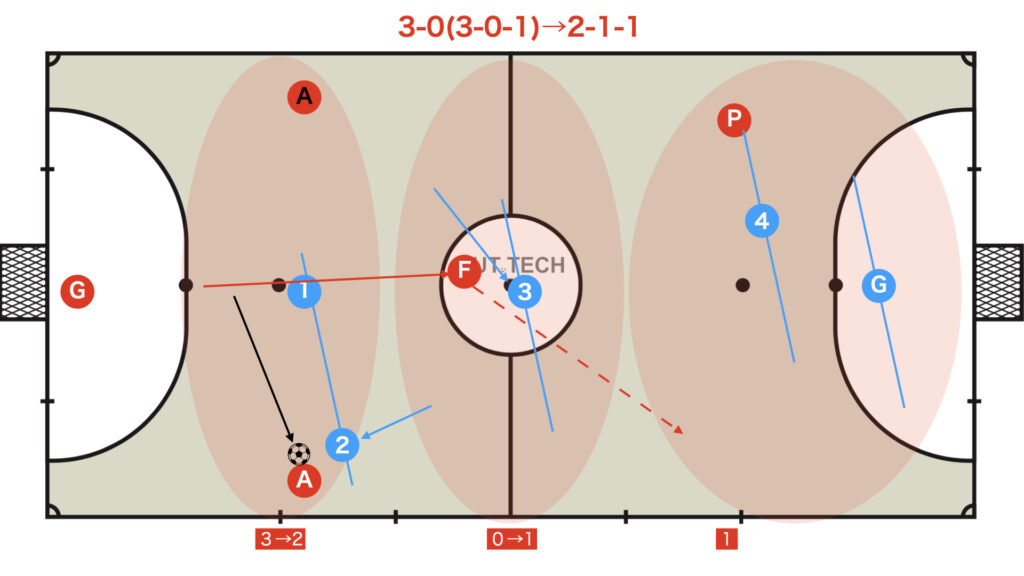
When the Fixo passes to an Ala and moves into the second line (Entrelineas), it transitions to a 2-1-1 formation.
From 2-1-1 to 2-2 (2-0-2)

Transitioning from 2-1-1, when the second line player moves to the third line, it changes to a 2-0-2 (2-2) formation.
Unlike the 2-0-2 formation with two pivots facing the goal, here the players receive the ball facing forward. Despite different body orientations, it’s still a 2-0-2 formation in terms of positioning.
This sequence of play is referred to as a Long Para.
Line Drop (Line Cut)
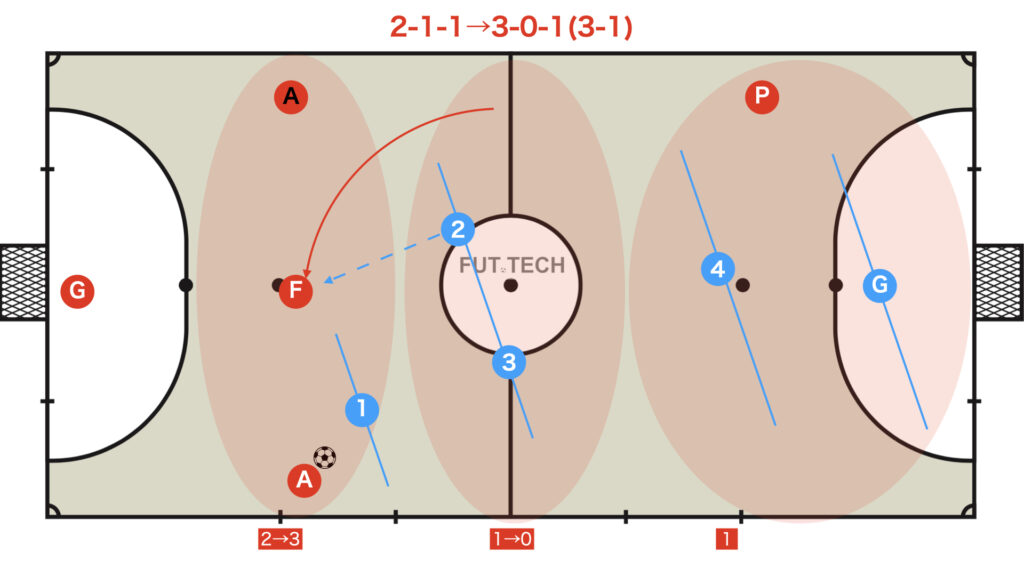
From a 2-1-1 formation, when the second line player drops back, it forms a 3-0-1 (3-1). This tactic was once the play model of Shriker Osaka under Coach Kogure.
From a 3-1, when the pivot drops back (line cut), the formation changes to Quatro Zero (4-0).
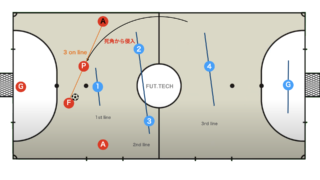
Thank you very much for reading this article to the end.
If you found this article useful, please consider sharing it using the social media share buttons above.
We regularly share valuable insights on futsal tactics on Twitter, so if you haven’t followed us yet, we’d appreciate your support!
We are committed to raising the level of futsal in Japan by sharing high-quality information through discussions with individuals who have coaching experience in the F.League and overseas.
If you have any questions or notice any mistakes, feel free to leave a comment below.
We update our articles regularly, so if you’d like to keep reading, please bookmark our site or search for “FutTech”!
